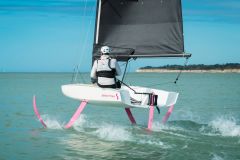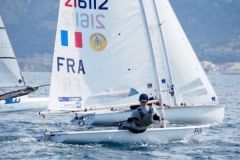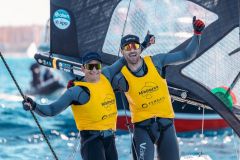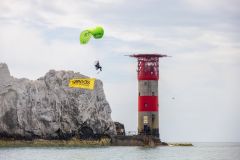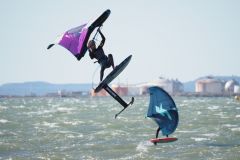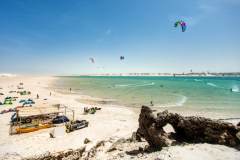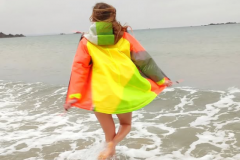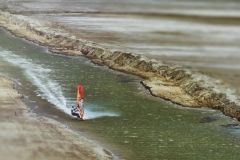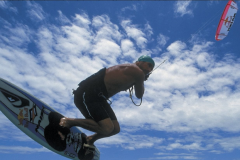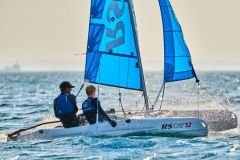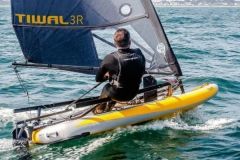A UFO on the beach
While walking on the Grand Pavois beach area, I'm looking for something new. Not much to get my teeth into until I see a dinghy that is missing something. Indeed, a dinghy without a mast is intriguing. Yet, for readers of Bateaux.com, this UFO is not entirely unknown. It is the kitetender, a kite wing propulsion boat, designed by the Dutchman Peter Renssen. If we had already talked about it on this site, we would not have tried it, and for good reason, it is his first show in France. Appointment is taken the next day to remedy it, with a little more wind, we hope.
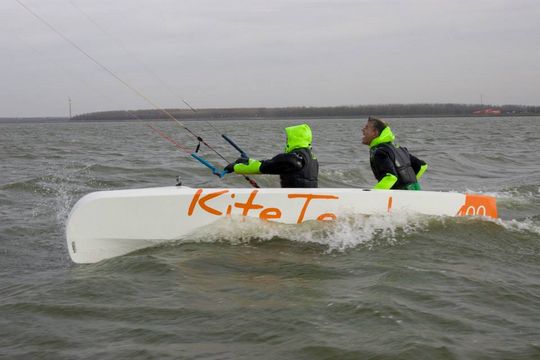
Discovery of the boat
The kitetender is designed as a way to make the kite accessible to the practitioner who would generally tend to choose the dinghy and the classic sail. So here I am perfectly in the target: I have never done a kite, but I sail a sailboat. After putting on a wetsuit, the water temperature of the Charente in September and the speed of the kite make it necessary, we do a quick review of the operation with Eric Pelaprat of Fil d'Air, distributor of the kitetender in France. He will be my kite trimmer for the exit. Apart from the absence of a mast, replaced by a fixation for the kite, there are no major differences, except for the absence of tips and cleats in the cockpit.

We need wind!
We leave directly from the sand of the beach of Minimes, American style! The kite is enough to launch us. Once out of the way, I take the rudder down, as on a classic dinghy, while Eric sets the daggerboard. The wind is a bit slack, but we manage to gradually get closer to the lighthouse at the End of the World, by tacking. As with kite surfing, it's difficult to have fun below 10 knots, although you can choose any size kite. You can indeed fit any kite on the kitetender.
As soon as the wind picks up a little, you can feel the acceleration. Eric shows me how easy it is to manoeuvre, like reversing. Nevertheless, you have to learn how to handle the wing, which I wouldn't do in an hour this afternoon! With the reassuring stability of the boat, the exercise still seems more accessible to me than standing on a board.

Surfing at 20 knots!
Some auspicious clouds loom on the horizon on the side of the Ile de Ré bridge. The wind is gradually increasing, our speed too. The footstraps fixed in the cockpit are taking all their sense to wedge my feet, the acceleration undergone during the gybe being muscular. The acceleration during the gybe was strong. We tacked to the schedule at around twenty knots. The feeling at the water's edge is exhilarating. The helm remains very manoeuvrable. Unfortunately, it's time to go ashore, as two youngsters who followed us on a semi-rigid are eager to try and I understand them!

 /
/ 




